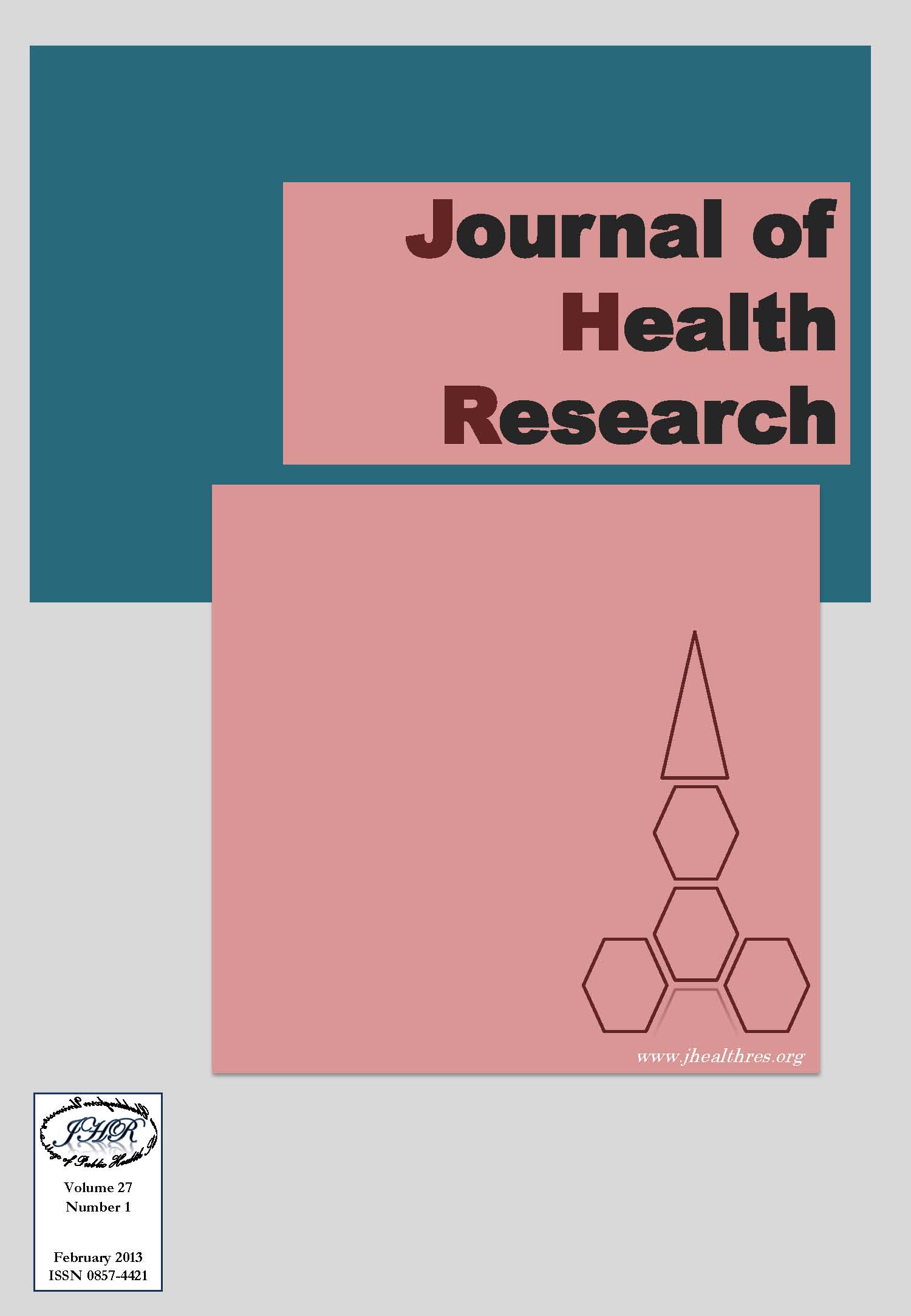Comparison Of Quality Of Life Scores In Adolescents With Primary Dysmenorrhea
Keywords:
Primary dysmenorrhea, Health-related quality of life, Short Form-36 (Thai)Abstract
Dysmenorrhea is characterized by a crampy pelvic pain beginning shortly before or upon the onset of menses, and lasting for one to three days. Most adolescents experience in the first few years after the menarche. Health-related quality of life (HRQOL) was assessed by the SF-36 health survey (SF-36) measurements have gained attention as important functional outcomes in dysmenorrhea. The objective of this study was to compare the quality of life scores in adolescents with primary dysmenorrhea between mefenamic acid and prasaplai extract treating group. Data were collected from female of 197 aged 18-25 who required analgesic drug for pain and primary dysmenorrhea diagnosis by gynaecologist at Thammasart University between March 2011 and March 2012 by means of face-to-face interviews. The short from SF-36 (Thai) is a questionair containing 36 items covering eight domains. Data were analyzed by descriptive statistics. An independent samples t-test was utilized to compare HRQOL between the control group (Mefenamic acid) and treatment group (Prasaplai extract). The severity of menstrual pain was determined by visual analogue scale. The quality of life scores were assessed using the Short Form – 36 (SF-36) surveying to identify particular modalities of primary dysmenorrhea which associated with significant adverse effects on quality of life. The level of significance was set at 0.001. The results indicated that, mean age and body mass index (BMI) of Mefenamic acid group were 19.73 years, BMI 20.16; while those of Prasaplai extract group were 19.78 years, BMI 19.94 respectively. There were no significant differences between both groups. In addition to linear subscale scores of the SF-36, the physical component summary score (PCS) and mental component summary score (MCS) were compared between before and after taking Mefenamic acid and Prasaplai extract. All domains showed significant improvement in PCS (p = < 0.001) and MCS (p = < 0.001). Both treatment groups had significantly QOL scores (p = < 0.001) in eight domains. Prasaplai extract group had particularly lower scores in domain of physical functioning (44.79, 26.97) vs (53.21, 30.00) and social functioning (46.31, 33.57) vs (51.54, 33.00) when compared to Mefenamic acid group. In conclusion: Prasaplai extract has a positive effect in the quality of life scores in adolescents with primary dysmenorrhea as well as Mefenamic acid.







